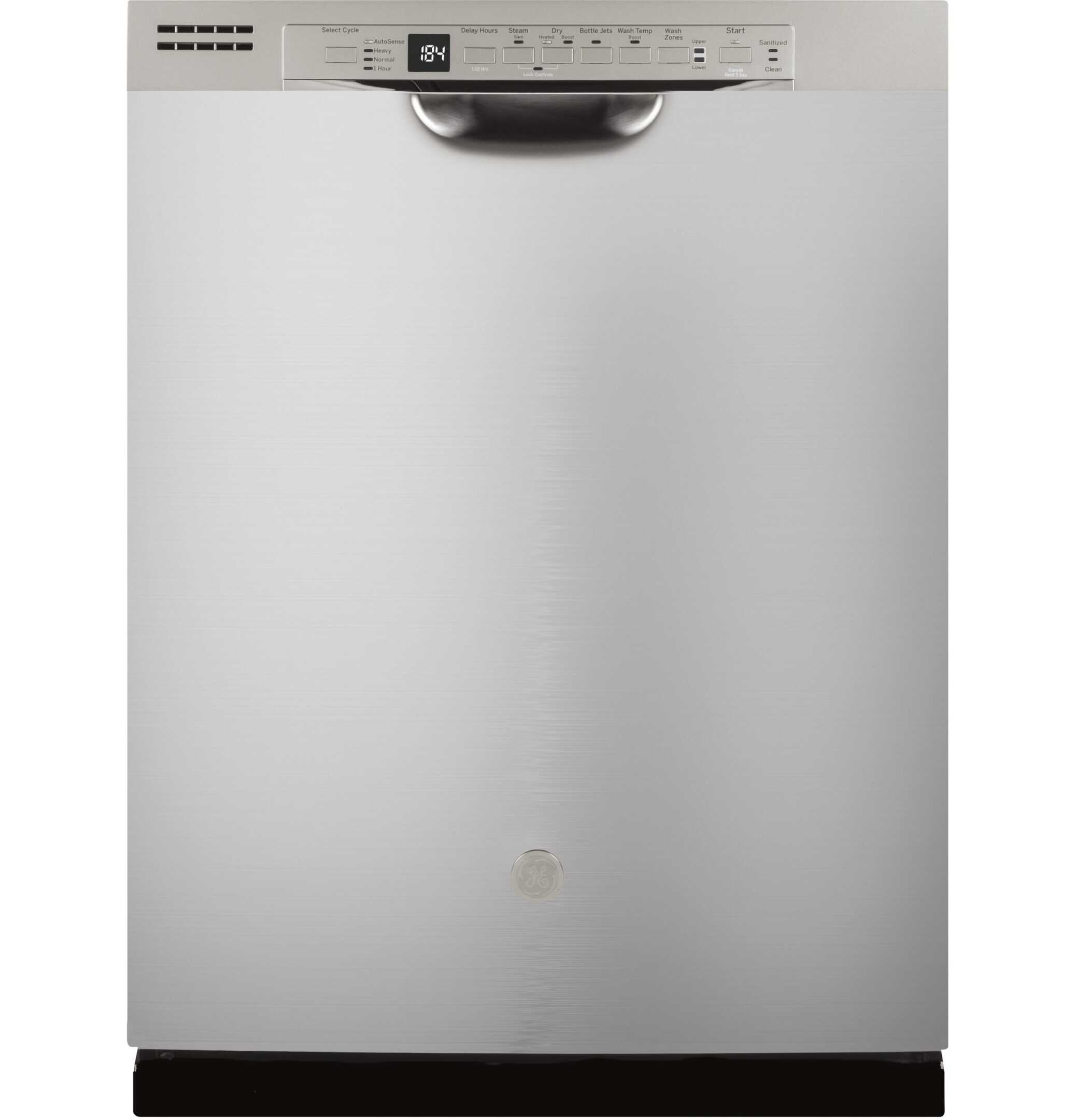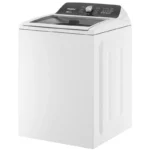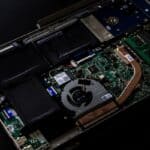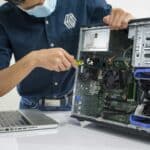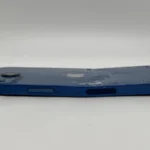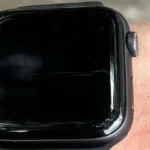GE dishwashers are great appliances, but they can sometimes have issues. When problems come up, it’s helpful to know how to fix them. This guide will show you how to solve common GE dishwasher problems.
Many GE dishwasher issues can be fixed at home without calling a repair person. You can save time and money by learning some simple tricks. From dishes not getting clean to strange noises, we’ll cover the most common problems.
Fixing your dishwasher can be easy with the right steps. We’ll walk you through how to clean filters, check for clogs, and more. By the end, you’ll feel more confident about handling dishwasher troubles on your own.
Troubleshooting Your GE Dishwasher: Common Issues and Solutions
| Problem | Possible Causes | Solutions |
|---|---|---|
| Dishwasher won’t start | * Power issue: Check the circuit breaker or fuse. * Door not latched properly: Make sure the door is fully closed and latched. * Control panel malfunction: Try resetting the dishwasher by turning off the power at the breaker for a few minutes. | * Reset the breaker or replace the fuse if necessary. * Close the door firmly until it latches. * If resetting doesn’t work, consider contacting a service technician. |
| Dishwasher not filling with water | * Water supply issue: Check if the water supply valve is open. * Inlet valve malfunction: The valve that lets water into the dishwasher may be faulty. * Float switch stuck: This safety device prevents overfilling. | * Turn on the water supply valve. * If the valve is open but no water flows, it may need replacement. * Check the float switch for debris or obstructions and clean or replace it if necessary. |
| Dishwasher not draining | * Clogged drain hose or filter: Check for food debris or obstructions. * Drain pump malfunction: The pump may be jammed or broken. | * Clean the drain hose and filter thoroughly. * If the pump is not working, it will likely need replacement. |
| Dishes not clean | * Improper loading: Ensure dishes are loaded correctly for proper water circulation. * Spray arm blockage: Check for food particles or mineral deposits blocking the spray arms. * Low water temperature: Water should be at least 120°F for optimal cleaning. * Detergent issue: Use the correct amount of detergent and ensure it’s fresh. | * Rearrange dishes to allow water to reach all surfaces. * Clean the spray arms by removing and rinsing them under running water. * Check the water heater temperature and adjust if necessary. * Use a high-quality dishwasher detergent and avoid overloading the dispenser. |
| Dishwasher leaking | * Door gasket worn or damaged: Inspect the gasket for cracks or tears. * Leaky pump or hose: Check for visible leaks around the pump and hoses. * Overfilling: The float switch may be malfunctioning. | * Replace the door gasket if it’s damaged. * Tighten or replace any leaky hoses or clamps. If the pump is leaking, it may need replacement. * Check the float switch for debris or obstructions and clean or replace it if necessary. |
Initial Setup and Installation
Setting up a GE dishwasher involves several key steps. These include unpacking, connecting water, and ensuring proper power supply. Careful setup helps avoid problems later.
Unpacking and Positioning
Start by removing the dishwasher from its packaging. Check for any damage during shipping. Place the dishwasher near its final spot. Make sure it’s level. Use a level tool to check. Adjust the legs if needed.
The dishwasher should be close to the sink. This makes it easy to connect water and drain lines. Leave some space around it for air flow. Don’t push it tight against walls or cabinets.
Remove all packing materials from inside the dishwasher. This includes foam and plastic wrap. Check the spray arms. Make sure they can spin freely.

Connection to Water Supply
Connect the dishwasher to the hot water supply. Use the fill hose that came with it. Attach one end to the dishwasher inlet valve. Connect the other end to the house’s water supply.
Check for leaks after connecting. Turn on the water slowly. Look for drips or sprays. Tighten connections if needed.
The drain hose needs proper setup too. It should form a high loop under the sink. This prevents dirty water from flowing back into the dishwasher.
Power Supply and Circuit Requirements
GE dishwashers need the right electrical setup. Most models need a 120-volt, 60 Hz, AC-only circuit. The circuit should be 15 or 20 amperes.
Use a time-delay fuse or circuit breaker. This protects against power surges. Make sure the outlet is grounded. Don’t use an extension cord.
Check the owner’s manual for exact power needs. Some models might need different setups. The control panel should light up when power is connected right.
Always turn off power at the main fuse box before working on electrical parts. Safety comes first when dealing with water and electricity.
Common Issues and Solutions
GE dishwashers can have problems. Here are some common issues and how to fix them. These tips can help you get your dishwasher working again.
Dishwasher Not Starting or Power-Related Problems
If your GE dishwasher won’t start check the power first. Make sure it’s plugged in. Look at your home’s fuse box for tripped breakers.
Press the Start button firmly. Some models need a hard press. Check if the control lock is on. This stops buttons from working. To unlock press and hold the Control Lock button for 3 seconds.
If these don’t work the main control board might be bad. This part controls the whole dishwasher. You may need to call for GE appliance repair service.
Water Supply Issues
When a GE dishwasher won’t fill with water check these things:
- Is the water turned on?
- Is the fill hose kinked?
- Is the inlet valve screen clogged?
Turn off the water and power. Clean the inlet valve screen. It’s where the hose connects to the dishwasher. Use a brush to remove dirt.
Check if the float switch is stuck. This switch stops overfilling. Lift and release the float in the bottom of the tub. If it’s stuck clean around it.
If water still won’t enter the inlet valve may be broken. This part lets water into the dishwasher. You might need a pro to replace it.
Drainage and Leaks
For dishwasher drainage problems:
- Clean the filters
- Check for kinks in the drain hose
- Make sure the garbage disposal is clear
Remove and clean the filters at the bottom of the dishwasher. Straighten any bends in the drain hose. Run the garbage disposal to clear any clogs.
For leaks check the door seal. Look for cracks or food bits. Clean the seal with warm soapy water. If it’s damaged you’ll need to replace it.
Check under the dishwasher for puddles. A leaky pump or hose could be the cause. These often need a pro to fix.
Wash and Dry Performance
If dishes aren’t getting clean:
- Use the right detergent
- Don’t overload the racks
- Clean the spray arms
Make sure you’re using dishwasher detergent not dish soap. Don’t pack dishes too tightly. Water needs to reach all surfaces.
Remove and clean the spray arms. Clear any clogged holes with a toothpick. This helps water spray evenly.
For drying issues check the rinse aid. Fill the rinse aid dispenser. This helps water slide off dishes. Use the heated dry setting if your model has it.
If problems persist check the heating element. A broken element won’t heat water or dry dishes well. This usually needs a pro to replace.
Frequently Asked Questions
GE dishwashers can have various issues. Here are some common problems and solutions to help fix your dishwasher quickly.
What are the common troubleshooting steps for a GE dishwasher that won’t start?
Check if the dishwasher is plugged in. Make sure the door is fully closed and latched. Look at the circuit breaker to see if it tripped. Press the Start/Reset button and wait 2 minutes.
If these steps don’t work, check the power connections. The control panel may need to be reset.
How can error codes be interpreted on a GE dishwasher?
Error codes show up on the display panel. They point to specific problems. Common codes include:
- E1: Drainage issue
- E2: Heating problem
- E3: Water filling trouble
Check your manual for a full list of codes. You can also look up GE dishwasher error codes online.
What should be done if a GE dishwasher’s control panel is unresponsive?
First, try a hard reset. Unplug the dishwasher for 1 minute. Then plug it back in. If that doesn’t work, check for stuck buttons on the panel.
Clean the panel with a damp cloth. Make sure nothing is pressing on the buttons. If problems continue, the control board may need to be replaced.
What are the typical causes of a GE dishwasher failing to run a cycle?
Several things can cause this:
- Door not latched properly
- Delayed start is set
- Control lock is on
- Water supply issue
- Faulty start button
Check these items first. If the problem persists, there may be an issue with the main control board.
How can a GE dishwasher be reset?
To reset a GE dishwasher:
- Press the Start/Reset button
- Wait 2 minutes
- Open and close the door
If this doesn’t work, try unplugging the unit for 1 minute. Then plug it back in. This often resets the control board.
Why is my GE dishwasher beeping, and what can I do about it?
Beeping can mean different things:
- Cycle is done
- Door not closed properly
- Error detected
Check the display for error codes. Make sure the door is fully closed. If beeping continues, consult your manual or contact GE support for help.

